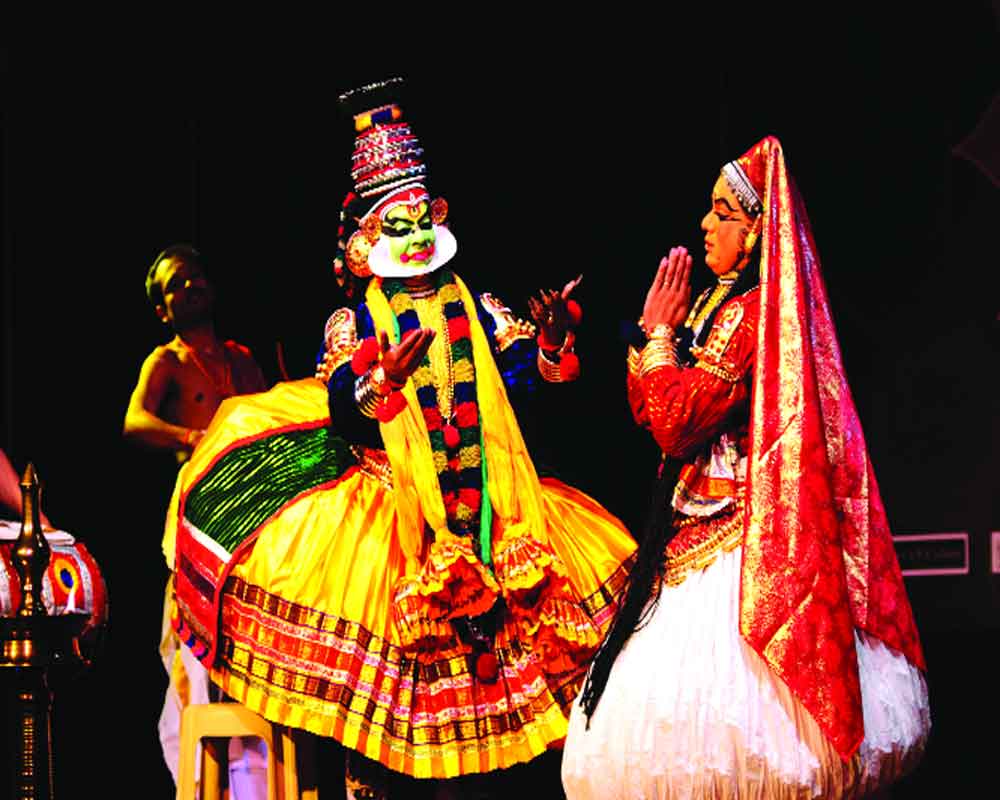It is imperative to promote Indian classical dance forms to not only safeguard India’s creative legacy but also celebrate the enduring spirit of women who nurtured these cultural traditions over centuries
Deeply ingrained in the nation’s cultural and historical legacy, Indian classical dance forms stand as a testament to the artistic excellence that they have endured for generations. These age-old dance forms, such as Bharatanatyam, Kathak, Odissi, Kuchipudi, Manipuri, and Kathakali, showcase a beautiful fusion of storytelling, rhythm, and emotion. As modernity permeates through every facet of our lives, it becomes increasingly crucial to preserve and promote these traditional dance forms, not only for the protection of India’s creative legacy but also as a celebration of the unique feminine energy that has shaped and nurtured these art forms for centuries.
Indian classical dance forms trace their origins to ancient scriptures and texts, serving as a medium to convey stories from mythology, epics, and folklore. For instance, Bharatanatyam finds its roots in the Natya Shastra, a treatise on performing arts attributed to the sage Bharata Muni. Similarly, Kathak traces its origin to the Hindi word ‘Katha’ and developed as a medium of storytelling from Hindu scriptures like the Mahabharata and the Ramayana. As such, each dance form carries a unique history, with regional variations adding to the diverse cultural landscape of the country, often shaped and perpetuated by the creative expressions of talented women who have been the torchbearers of these traditions.
Preserving these dance forms is crucial to maintaining the cultural identity of the nation. These art forms serve as more than just performances; they are living repositories of Indian heritage, morals, and spiritual beliefs. The detailed hand movements, facial expressions, and body motions narrate stories that have been passed down from one generation to the next, serving as a connection between the past and the present. In addition to their cultural importance, these dances also enable artists to express a wide range of feelings, from joy and celebration to sorrow and introspection. The intricate footwork, graceful movements, and expressive gestures allow artists to communicate intricate narratives and emotions silently in a world that is evolving yet still deeply rooted in tradition.
It may perhaps be this deep connection with cultural identity that has prompted Prime Minister Narendra Modi to put India’s rich cultural heritage at the forefront of Indian diplomacy. His commitment to cultural diplomacy is evident in initiatives like the International Yoga Day and the Pravasi Bharatiya Divas, both of which have become global celebrations of Indian culture. Under his prime ministership, ministries and embassies around the world have undertaken numerous initiatives to actively support and promote classical dance forms to international audiences. Through cultural exchange programmes, Indian artists have been provided with the opportunity to perform on global stages, while international artists have been welcomed to experience the diverse spectrum of Indian traditions.
In addition to being a means of artistic expression, dance forms also have the potential to bridge societal gaps by promoting inclusivity and understanding. The themes of diversity, unity, love, joy, sorrow, compassion, and communal harmony championed by these dance forms can be used to build a shared cultural understanding that transcends regional, linguistic, and religious boundaries. The heightened cultural integration, in return, will help foster a sense of unity and mutual respect among the diverse communities that make up the very fabric of Indian society.
In recent times, however, the influx of modern cultural trends, limited infrastructure, and waning interest among the younger generation have posed grave challenges to the practice and growth of these dance forms. Any effort to address these challenges requires sustained efforts in education and awareness, both at the school and community levels. Additionally, there is a need to leverage digital platforms for learning and showcasing performances to make these dance forms more accessible to a wider audience. It is perhaps this desire to promote and reignite interest in these dance forms that has prompted us at Roots 2 Routes to organise online dance courses for different dance forms, starting with Bharatanatyam, Kathak, and Odissi. Launched in collaboration with the Indian Council for Cultural Relations (ICCR), Centre for Cultural Resources and Training (CCRT), along with 60 embassies around the globe, the aim of the mission is to present dance enthusiasts across the world with an exclusive opportunity to immerse themselves in the rhythmic intricacies, traditional narratives, and storytelling elements intrinsic to the Indian classical dance forms. With the majority of its proponents and practitioners being women, the initiative also aims to provide a platform for their creative expression.
As we commemorate Women’s Day, the significance of preserving Indian classical dance forms assumes additional significance; it stands as a strategic investment in the very soul of the nation. Our dance forms represent a timeless link to our nation’s rich cultural and historical legacy, providing us with a source of inspiration, artistic expression, and social cohesion. They also stand as a testament to the hundreds and thousands of women artists who have promoted and preserved the very essence of classical dance forms. Recognising the intrinsic value of Indian classical dance forms is pivotal, especially on this occasion. Actively contributing to their preservation is not just a nod to tradition but a deliberate step towards fostering the strength and grace of women across generations. It is a way to ensure that these eternal forms of art remain within reach amidst the present and future generations. This Women’s Day, let’s pledge to support and promote our cultural treasures, reinforcing our dedication to empowering women through a silent yet impactful medium.
(The writer is the founder of Routes 2 Roots, a Delhi-based NGO; views are personal)


























